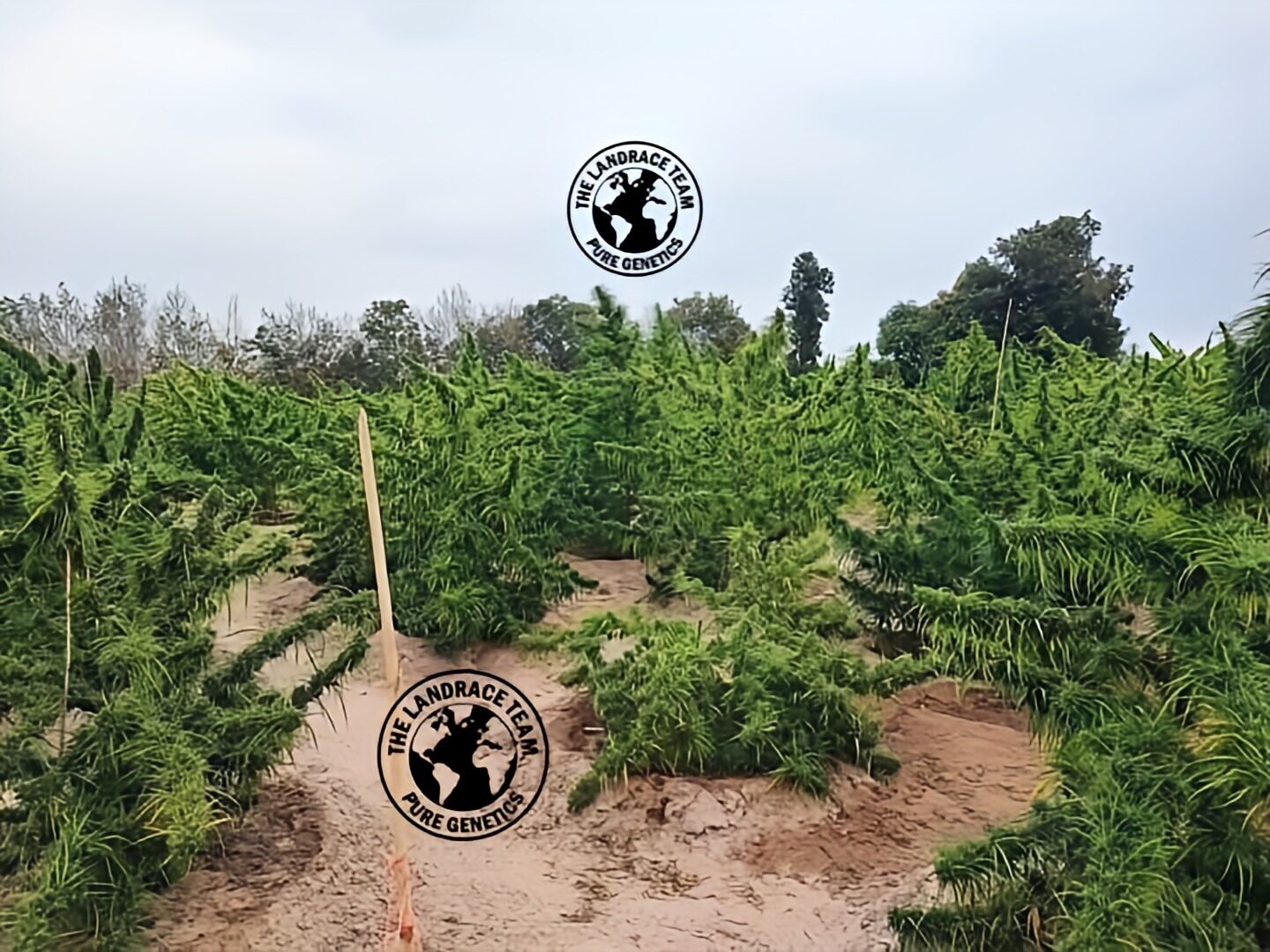Genetics: Erawan (white elephant)
District: Mae Hong Son
Latitude: 19 N
Elevation: 600 m.a.s.l. (2000 ft)
Height: 2-4 metres (6.5 – 13 ft) outdoors in the ground in good soil in Thailand
Sowing month: August in Thailand (during rainy season months)
Harvest December – December to February in Thailand
Aromas: menthol, buffalo skin
Taste: tobacco and mixed herbs
THC: 20%
Yield: high
Phenotype: the plants seem all pretty uniform
Effect: uplifting, happy, creative, energy booster, mood lifter, clear head, focued, hungry
Characteristics: white flowers when grown in full sunlight
Grow type: outdoors, greenhouse, greenhouse
“If you grow them outdoor in full sunlight their flowers are shiny white. They grow very fast if you sow the seeds during the rainy season (June-August) and soon become tall.” This is what the farmer kept telling us, adding ” The flowers are very good for making edibles and are known for their potency”.
The name “Erawan” comes from the mythological white elephant with 33 heads. In Hindu mythology, Erawan is the divine mount of Indra, the king of the gods. In Buddhist mythology, Indra is the guardian of the heavens and the leader of the gods. Erawan is often depicted riding Indra’s elephant, flying across the realm, and bringing rain to the earth. Erawan symbolizes the divine connection between the earthly and celestial realms, representing sovereignty and strength in Southeast Asia. In Thailand, it is also a symbol of national identity.
Erawan District is located in the eastern part of Loei province in northeastern Thailand.
Erawan National Park is famous for the Erawan Falls, which are named after the elephant.
It is likely that the plant’s name was inspired by its long side branches, which resemble the elephant’s tusks. The white colour of the flowers is especially vibrant and shiny when the plants are grown in full sunlight thus the connection with its name Erawan, the White Elephant.
White because of the colour of its flowers that shine in the sun and elephant because of its long side branches resembling the tusks of an elephant.
We’ve been told that these plants were originally the Ta Nao Si strain cultivated both in the Tanasserim HIlls ( Ta Nao Si ) in western Thailand not far from the Burmese border and also in Isaan (east Thailand) but that are now being cultivated all around the country. The seeds in question come from plants cultivated in a farm in Isaan. If properly grown to their full potential and in optimum conditions these plants can easily yield 2-3 kg per plant (4.5 – 6.5 lb)

